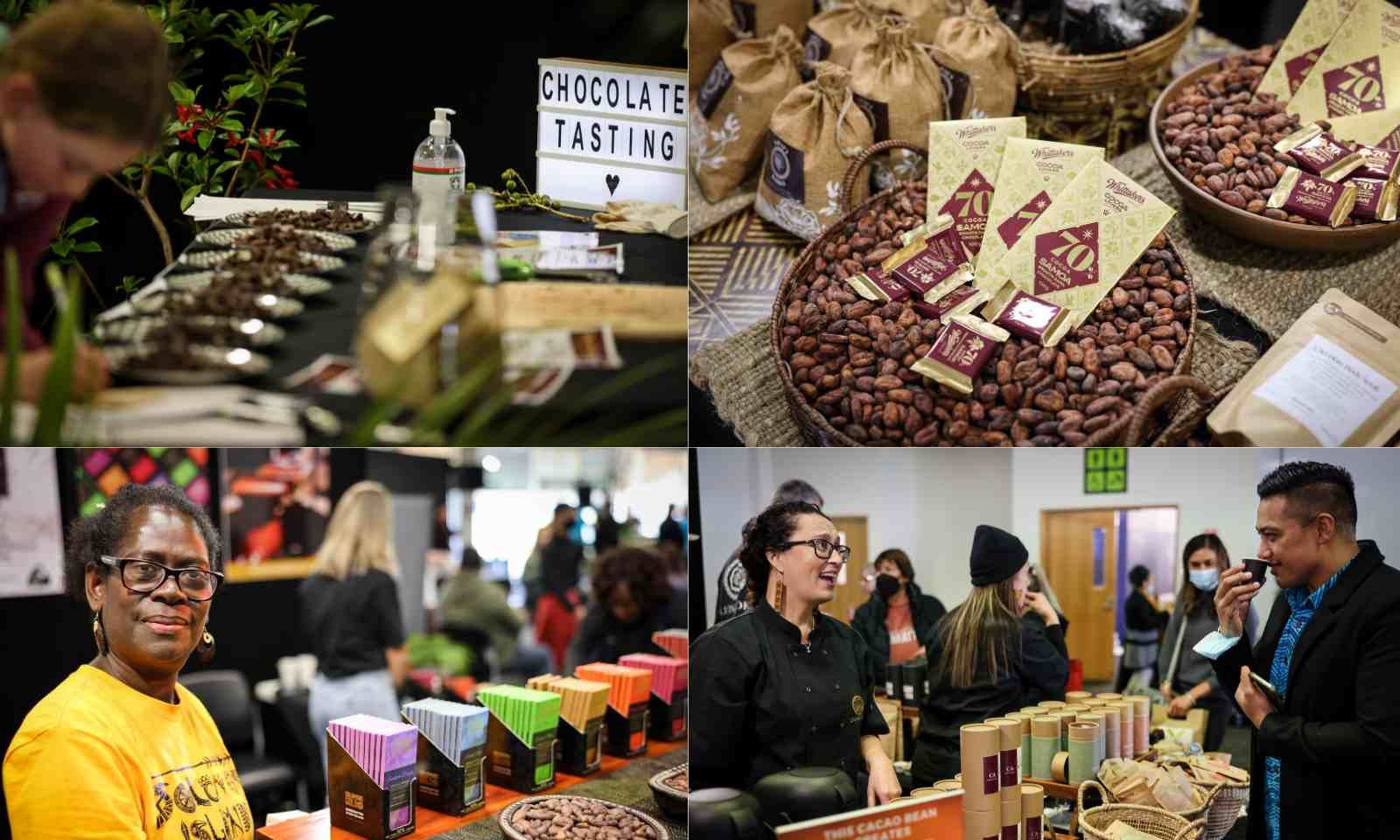

Whittaker's Chocolate NZ
World Chocolate Day: All you need to know
Hello sokaleti lovers…


Bad habits, burnout, and toxic people: What people are leaving behind before 2026


Pacific Cuisine: PMN’s top island dish of 2025


Bad habits, burnout, and toxic people: What people are leaving behind before 2026


Pacific Cuisine: PMN’s top island dish of 2025
Some people have it with a cup of coffee, others with strawberries and then some just like to enjoy it on its own.
But there’s one thing for certain: Chocolate is one of the most delicious treats one can indulge in.
Each year, the world comes together to celebrate this heavenly delight on the seventh day of the seventh month. Why?
International World Chocolate Day was established on 7 July to mark the supposed anniversary of the day when the first chocolate bar opened in Europe in 1550.
The day also commemorates chocolate's journey from the Americas to becoming a beloved global treat.

The Pacific Cacao & Chocolate Show in Auckland in July 2022. Photos/https://www.pacificcacao.org.nz
Pacific farmers and Kiwi chocolate makers also celebrate this day. In July 2022, Aotearoa held its first-ever Pacific Cacao & Chocolate show dedicated to Pacific-grown cacao beans. Auckland's Mt Smart Stadium was transformed into a chocolate paradise for the Pacific Cacao and Chocolate Festival.
Growers from Sāmoa, Vanuatu, the Solomon Islands, Fiji, Papua New Guinea, Bougainville, and the Philippines showcased their products with the visitors able to participate in the chocolate-making process and taste the organically-grown cacao from the region.
My family loves chocolate. We celebrate World Chocolate Day by eating lots of it. A new favourite of mine is Bennetts, nestled amidst the serene landscapes of picturesque Mangawhai - 90 minutes drive from Auckland. A cousin had introduced me to Bennetts, and I have not stopped visiting. I love their quality and tradition.
Whittaker’s has been voted our Most Trusted Brand for the past 13 years. The company says relationships are a key ingredient in enabling it to make world-class chocolate right here in Aotearoa.
Co-Chief Operating Officer Holly Whittaker, who is the great-granddaughter of founder JH Whittaker, says World Chocolate Day is an opportunity for everyone to celebrate a treat that has been loved for centuries “for the way it makes us feel as well as its delicious taste.
“We also celebrate our relationships with our cocoa farmers and other ingredient suppliers in New Zealand and around the world, staff at our one factory in Porirua, our ethical sourcing partners, our local community, and our chocolate lovers.

Bennetts of Mangawhai Chocolate Shop and Factory is a place for chocolate lovers like myself. Photos/PMN News-Christine Rovoi
“While there is wider demand and opportunity for Whittaker’s in these and other markets, our aim is still to be the best chocolate manufacturer rather than the biggest.
“Staying true to our values as a family-owned business remains a priority, and for us, that’s all about our uncompromising commitment to quality by controlling the whole chocolate-making process, from bean to bar, and continuing to build a more ethical and sustainable supply chain.”
While New Zealand is Whittaker’s home and key focus, it is also starting to take on the world, exporting to Australia, Canada, Malaysia, China, South Korea, Japan, the Middle East, and many Pacific island nations.
In 2023, around 4.9 million tonnes of cocoa were produced worldwide with Côte d'Ivoire and Ghana the largest cocoa-growing countries, accounting for nearly 60 per cent of the global cocoa production, followed by Ecuador with 9 per cent.
NZ’s exports of the sweet treat have grown by 40 per cent since 2019, with companies setting their sights on improving relations with Pacific cacao growers. More and more chocolate companies are using beans from the Pacific.
On World Chocolate Day, some families make chocolate chip cookies or brownies. Some workplaces host chocolate-focused potlucks as a team bonding exercise. Staff bring in their favourite chocolate treats to share over a cup of tea or coffee.
There are chocolate lovers who celebrate the day alone. I know of a friend who made herself a hot chocolate drink and watched chocolate-themed movies like Charlie and the Chocolate Factory, Chocolat, and Forrest Gump.
History
Before 1550, chocolate was only available in some parts of South and Central America, such as Mexico. European invaders, who explored the continent, sought to return home with the special treat.
It is believed that Spanish explorer Hernan Cortes was given a chocolate-based drink called xocolatl (pronounced ‘sho-ko-lah-tl’) by the Aztec emperor Montezuma.
Cortes took the beverage back to Spain, starting exports of the product to the Spanish royal court.
The popularity of the drink spread throughout Spain and across Europe. But it was too bitter for the European taste buds, and people began to add milk and sugar, vanilla, and cinnamon to make it sweeter.
In 1828, a Dutch chemist invented the solid chocolate but it was not as we know it.
Today’s chocolate did not arrive until the mid-19th century. In 1847, British chocolate company JS Fry & Sons created the first chocolate bar from cocoa butter, cocoa powder, and sugar.
Cadbury then began manufacturing boxes of chocolates and Easter eggs. In the 1870s, Swiss chocolatier Henri Nestle produced the first milk chocolate bar and later Rudolph Lindt, another Swiss, went into mass production.
In 1990, American firm Milton Hershey started their production, and the global popularity of chocolate was born.